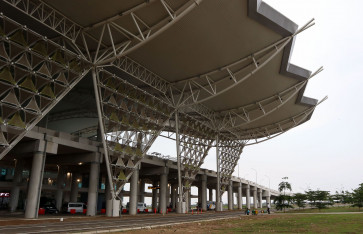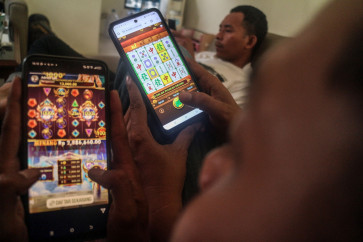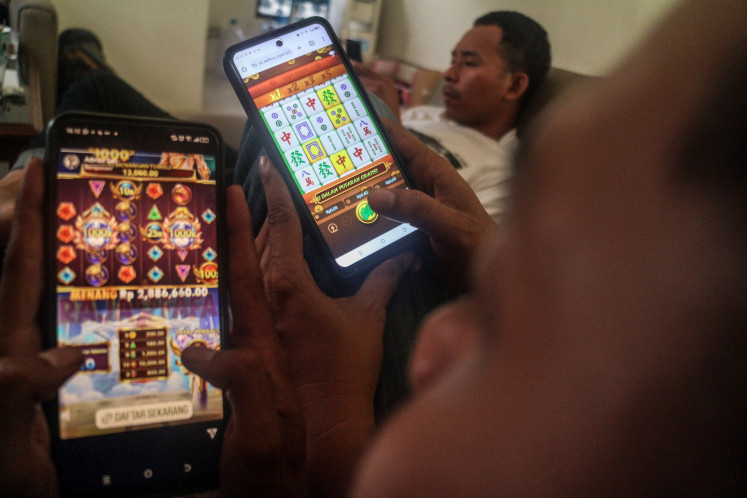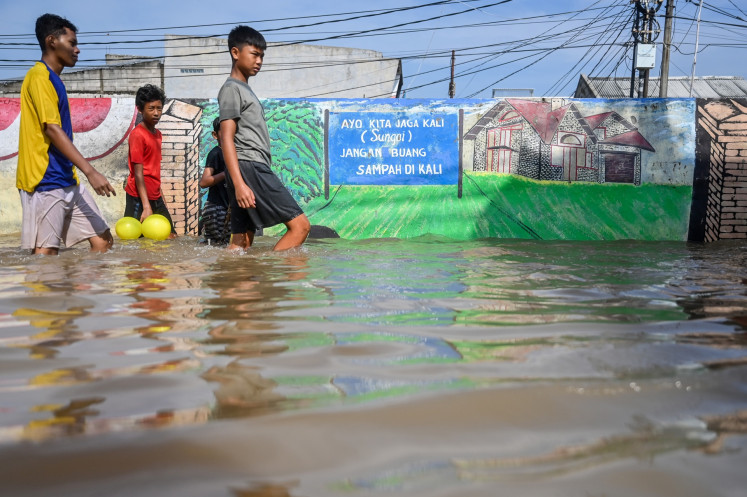Popular Reads
Top Results
Can't find what you're looking for?
View all search resultsPopular Reads
Top Results
Can't find what you're looking for?
View all search resultsTeachers as researchers; is it possible in Indonesia?
The education law stipulates that teachers have a BA degree as the minimum requirement
Change text size
Gift Premium Articles
to Anyone
T
he education law stipulates that teachers have a BA degree as the minimum requirement. It further states that to be a professional teacher they must undergo professional training, called PLPG or Pendidikan Latihan Profesi Guru.
Currently there are around 2.9 million teachers in the country, and only about a million of them have taken the training. Considering the huge numbers, it is unlikely that the rest will be certified within
two years.
The current mass-certification program is criticized for its cost, its poor methodology, and the appropriateness of its content. Recent findings of the teacher competency test (UKG) of a sample certified teachers showed their average competence to be 46 on the 0-100 scale.
Ostensibly, the certification program has improved welfare, but failed to improve quality of teaching, which is the bedrock of professionalism. This is consistent with the findings of my 2011 survey on the perceived impacts of the PLPG.
I found that the certification program has (1) improved teachers’ welfare (34.4 percent), (2) not improved quality of learning (27.8 percent), (3) improved teachers’ professionalism (23.4 percent), and (4) improved quality of learning (13.2 percent).
At this juncture it is fair to learn from Japan, where teachers practice jugyou kenkyuu, which literally means learning-teaching research. It suggests that doing research is inherent in being a teacher. In other words, teachers are necessarily researchers.
Jugyou kenkyuu, popularly known as “lesson study”, has been adopted for teaching junior secondary math and science in this country. Mindful of its success story, the government has recommended that it is to be implemented in teaching all school subjects.
Koji Sato, consultant for JICA (Japan International Cooperation Agency), once observed that in this country teaching and learning processes are not focused on the students, but on the teaching materials. It is student-based teaching-learning that distinguishes Japanese classrooms from Indonesian ones.
Jugyou kenkyuu is a long-established method of teaching-learning, practiced even before the Meiji restoration in the 1800’s. The method has seven characteristics as follows.
1. Reflection: critically thinking of what has been done in the past to prepare for a better future. Teacher researchers strive for improvements in teaching, and reflective practice provides them with insights for trying innovative ways of teaching.
2. Dialectic: problems are tested through rigorous questioning and contradicting. Teacher researchers keep asking themselves what they believe and practice is just a misconception. Teachers tend to replicate the way they were taught and take it for granted.
3. Collaboration: sharing knowledge and experiences with colleagues including headteachers. A group of teachers work together on a project, not necessarily funded by a donor or government. They alternate teaching and observing. They review the teaching actions.
4. Anti status quo: the attitude that current practice and its sustaining policies are not necessarily the best. Convinced by prolonged research findings, teachers would discontinue the old practices to promote the new.
5. Look for alternatives. Teaching and learning are multiple realities, for which a single solution is impossible. It is necessary to be open to multiple solutions.
6. Internalization of theory and practice. Jugyou kenkyuu translates as “action research”. Action suggests practice or what actually occurs in the class. Research connotes theory, something ideal and abstract.
Action research consolidates both. Through action, research teachers internalize both, so that they are not only skillful and resourceful in teaching, but are well informed of the underlying theories.
7. Lesson learned. Action research operates in at least three cycles of teaching and learning. Each cycle is evaluated to see both strengths and weaknesses, so that the next cycle generates more refined and established techniques or methods of teaching.
Thus defined, classroom action research is teacher-friendly in many respects. The teachers do not have to leave the job behind, as their classroom is the site of research as well. Familiarity with the class is a head start to research.
As the class is the research site, colleagues may observe and even participate in the research from A to Z. The more teachers involved, the higher the quality of research. Moreover, research findings will be more readily socialized in the school as a community of learning.
Obviously classroom action research is inexpensive. Researcher teachers are good at killing two birds with one stone. That is, they do teaching and researching at the same time.
For a long time research has been perceived as threatening, expensive, and formidable for academics let alone for school teachers. Research ranges from simple to complex. The essence of research, though, is not the cost, but the methodology and how its findings as empirical truth are used for public benefit.
Every year a huge amount of money collected from public taxes is spent on government-sponsored research projects. Often their reports just pile up in the warehouse. The research findings just go unreported. That is a waste!
In a nutshell, by any measure empowering teachers to do classroom action research seems to be the greatest model of teacher professional development. Sensei for the Japanese implies not only ability to teach a school subject, but also commitment to instilling the living values observed by the community. So to be a sensei, let’s do classroom action research.
The writer is a professor at the Indonesian Education University (UPI), Bandung, and a member of the board of higher education, and author of Pokoknya Action Research (2011).










